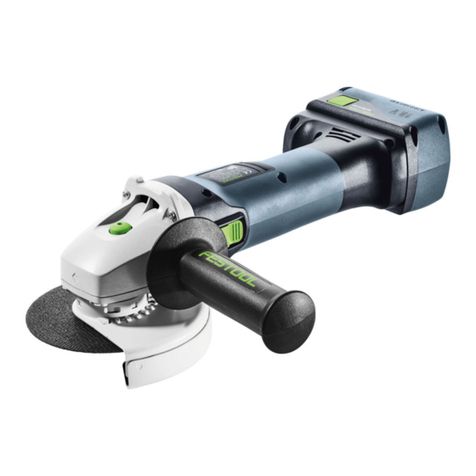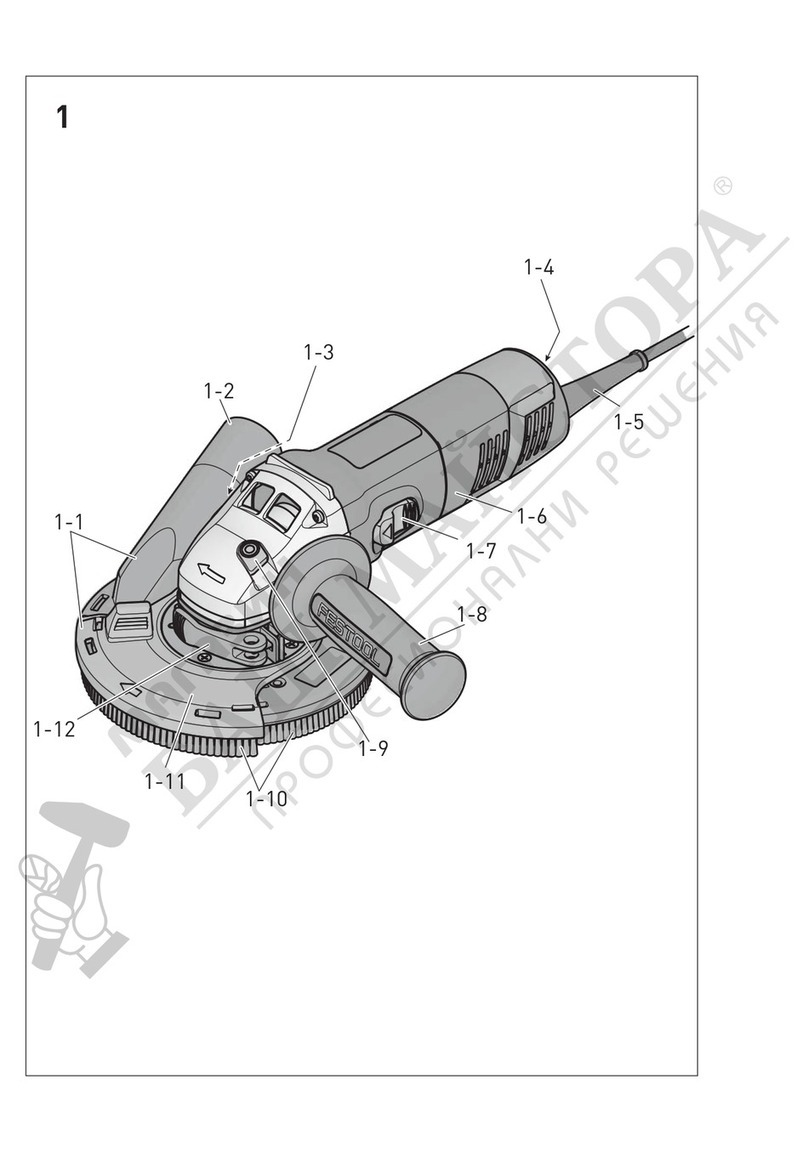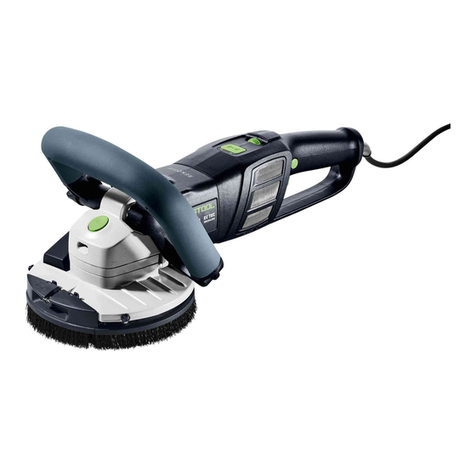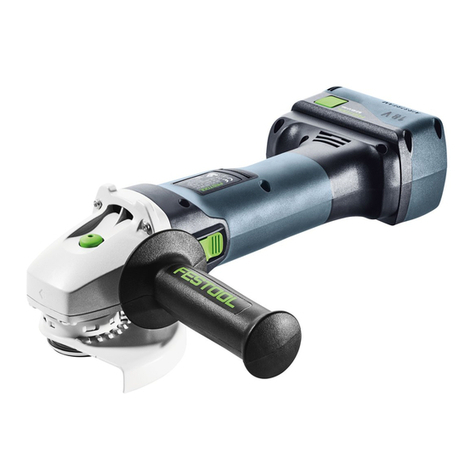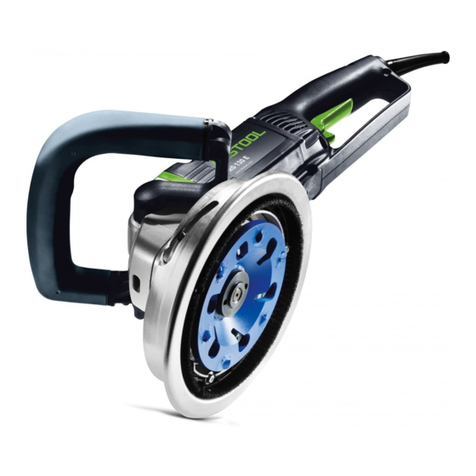10
The actual weight of the machine provides ad-
equate sanding pressure to produce good sanding
quality.
The expelled cooling air can be guided in the most
favourable direction by the ducting flap (1.1) .
4.1 Working with the sanding frame in the
case of type BS 75 E - Set
Set the machine with the knurled head screw (2.4),
so that when it is placed on the workpiece surface
the sanding belt does not engage.
The sanding belt is engaged by turning the knurled
head screw towards the plus symbol until the belt
makes contact.
Continue turning the knurled screw to achieve the
desired depth of stock removal (1 complete turn
corresponds to a height adjustment of 0.4 mm).
When interrupting or on completing work, the
sander is raised from the working position (2.3)
set to a position of rest (2.2) by means of an ec-
centric lever.
By swinging the eccentric lever back to working
position the depth of stock removal set previously
is again obtained.
4.2 Taking the sanding frame off
Press down the knurled head screw (2.4) until the
shank (2.5) springs out of the spring catch and the
machine can be withdrawn from the rear.
The sander and sanding frame are aligned
for optimum accuracy at the factory by
suitable adjustment of the guiding struts.
For this reason do not remove the guiding
struts.
4.3 Assembling the sanding frame
Make sure that the glide pins (2.6, 2.8) fixed to
the sanding frame engage front and back in the
grooves of the guide struts (2.7, 2.9).
Slide the sander downwards along the grooves
until the shank (2.5) engages.
4.4 Changing the sanding belt
Pull the lever (3.5) forward; the belt is now slack
and can be removed.
When inserting the sanding belt, make sure that
the running direction of the belt (usually indicated
by an arrow on the inside) matches the running
direction of the machine (3.4).
Tighten the belt again with the lever and align
when running.
4.5 Dust extraction
The dust produced while working can be
detrimental to health, combustible or
explosive. Suitable safety measures are
necessary.
The dust bag (4.1) with the adopter (4.3) is at-
tached to the exhaust duct (4.2) by means of a
bayonet catch by turning to the right.
The dust bag is removed for emptying by turning
it to the left.
At the time of fixing, ensure that the leaf spring
stud touches the belt housing.
The dust extraction system will continue to func-
tion effectively as long as the bag is emptied in
good time.
For working with the protection of the environ-
ment in mind it is advisable to use the Festool
dust extraction system.
The connecting socket from the suction hose can
be connected using the adapter (4.4) which is sup-
plied as standard.
4.6 Stationary use (partly accessories)
– Attach both feet (5.3) via the two threaded holes
(4.5). Important: the straight edges of the feet
must face inwards.
– Make sure that the machine is standing firmly:
use clamps to attach the feet to the base.
4.7 Longitudinal stop (partly accessories)
– Attach the longitudinal stop to the threaded hole
(5.2) using screw (5.1).
– Unscrew the screw (6.3) to adjust the position
of the longitudinal stop along the sanding belt.
– To sand sloping surfaces, unscrew the screw
(6.2) and adjust the longitudinal stop. The scale
(6.1) indicates the angle setting.
5 Maintenance and care
Always remove the power supply plug
from the socket before carrying out any
work on the machine.
All maintenance and repair work which
requires the motor casing to be opened
may only be carried out by an authorised
service centre.
Customer service and repair. Only
through manufacturer or service work-
shops: Please find the nearest address
at:: www.festool.com/Service
EKAT
1
235
4
Use only original Festool spare parts!
Order No. at: www.festool.com/Service

